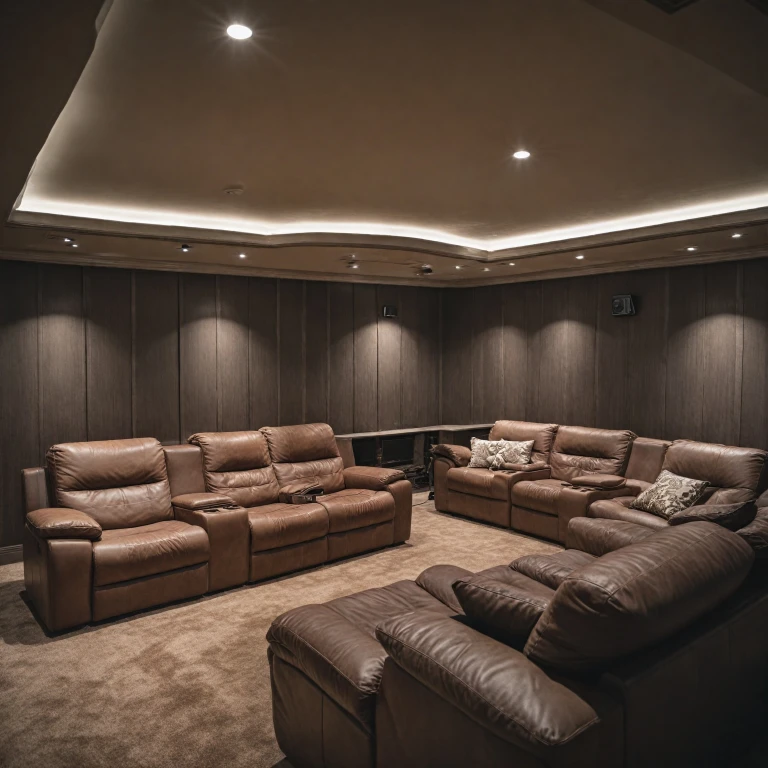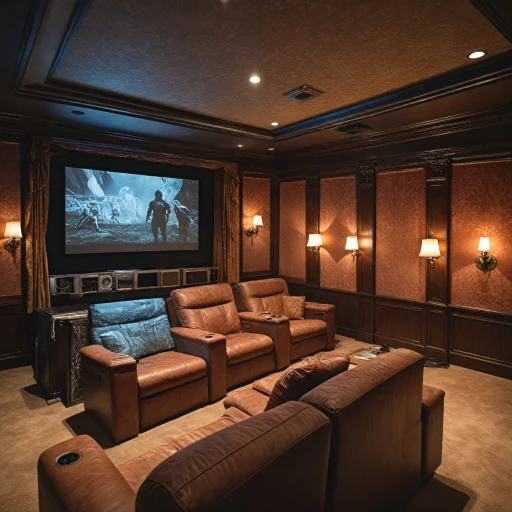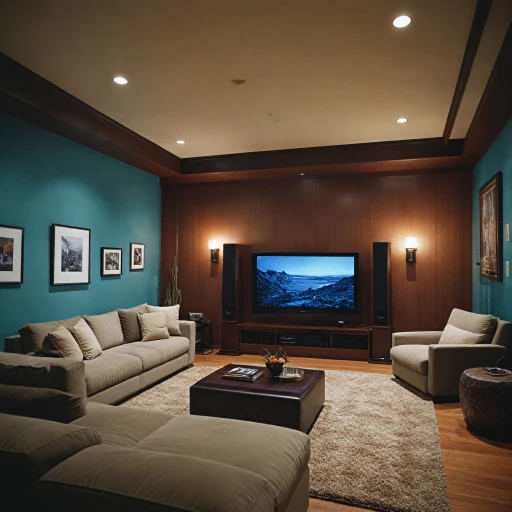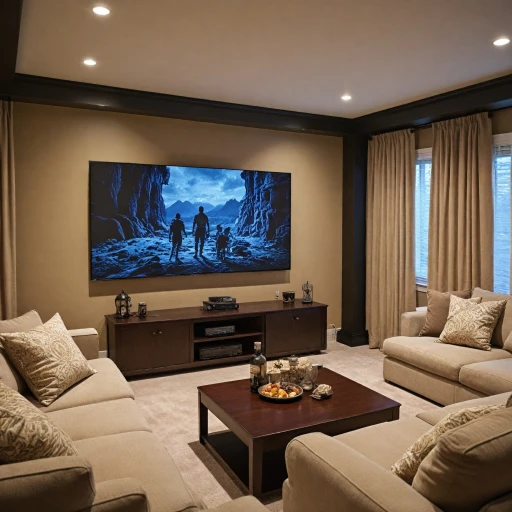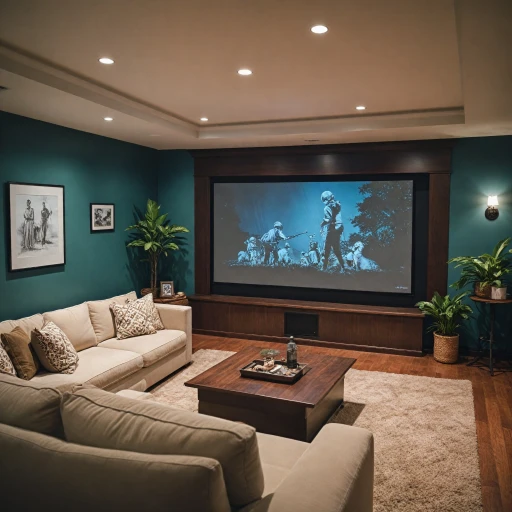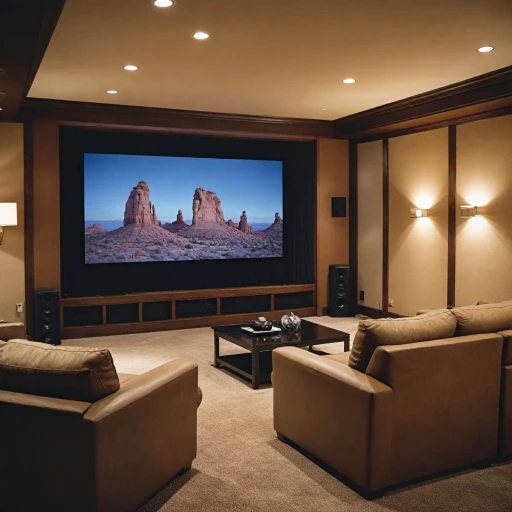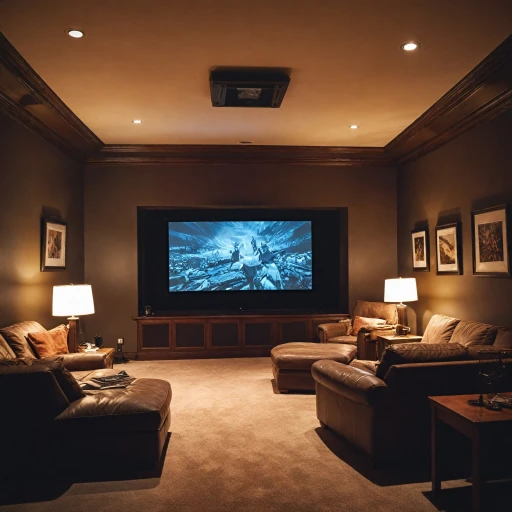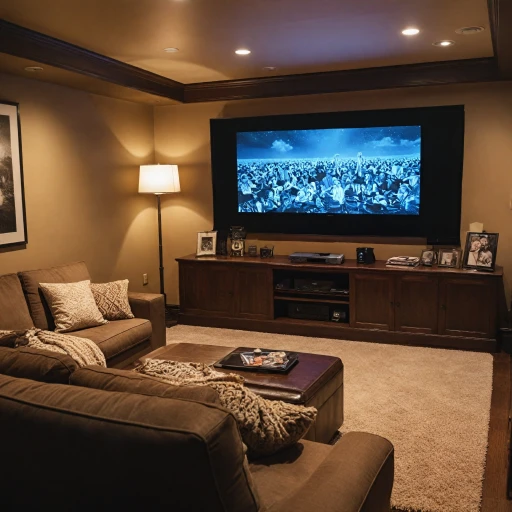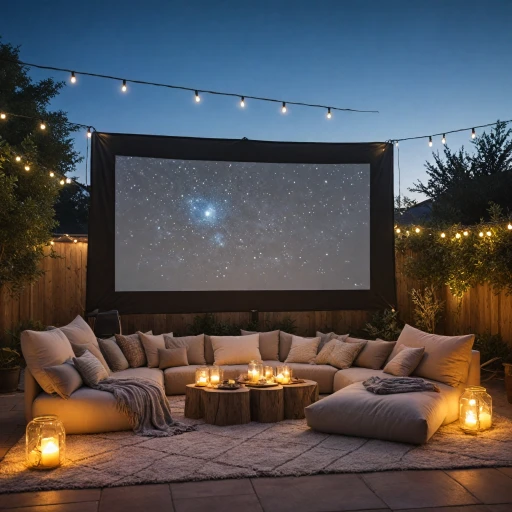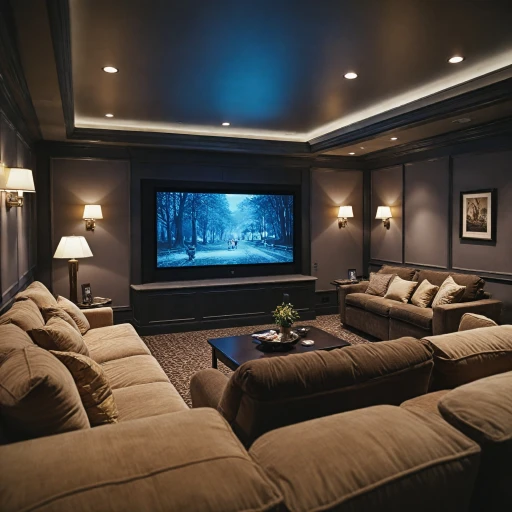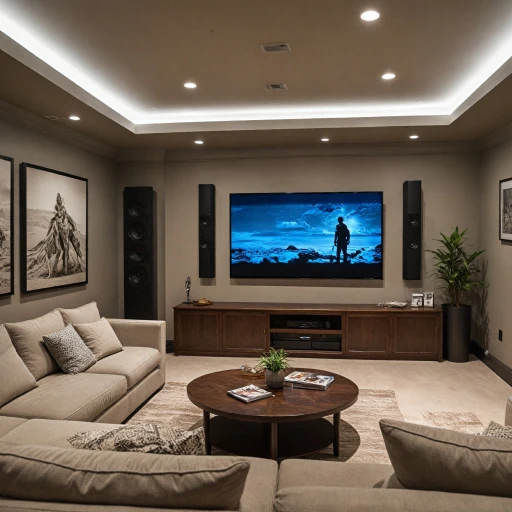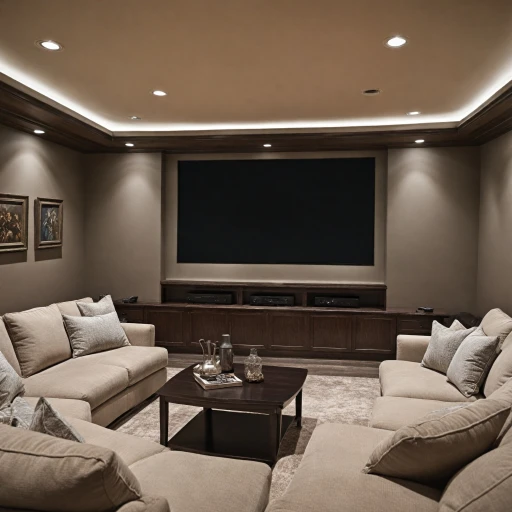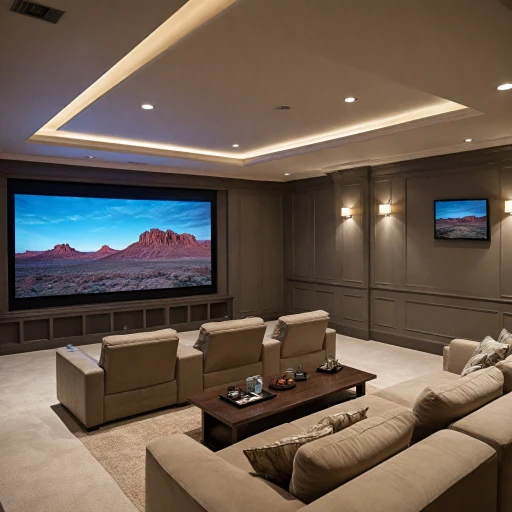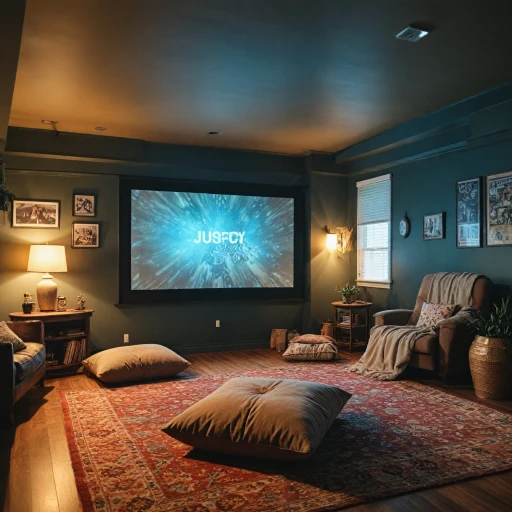
Understanding Dolby Atmos in Home Cinema
Immersive Audio for Your Home Cinema
When it comes to crafting an incredible home theater experience, the way sound envelops you can make all the difference. Enter Dolby Atmos; a revolutionary audio system that takes your home cinema to a whole new level. Dolby Atmos is renowned for its ability to deliver dynamic, 3D sound experience that places you at the center of the action. This system utilizes overhead sound and upward firing speakers to produce an immersive soundscape that not only surrounds you but also moves around and above you.
Learn Dolby Atmos enhances traditional surround sound by introducing new dimensions to audio. It utilizes multiple channels to create an environment where sound comes from all directions, making your movie viewing feel incredibly realistic. Whether you're watching the latest blockbuster on blu-ray or enjoying a concert film, the sound's precision and clarity offer a truly awe-inspiring theater system experience.
Enthusiasts often pair their Atmos setup with quality speakers such as the Klipsch Reference series, known for their dynamic range and powerful sound output. You also have the option to integrate a compatible soundbar or a set of firing speakers to effectively channel the rich Atmos sound home. Moreover, Atmos-enabled products are becoming increasingly accessible, ensuring that you can upgrade your existing system without breaking the bank.
For a more comprehensive understanding of how Dolby Atmos can transform your viewing, explore our guide on how to enhance your home cinema experience with cutting-edge audio technologies. Our goal is to ensure you get the best Atmos home theater experience tailored just for you.
Choosing the Right Projector for Dolby Atmos
Finding the Perfect Projector for Your Atmos Setup
When it comes to creating an immersive home cinema experience with Dolby Atmos, selecting the right projector is crucial. The choice of projector can significantly impact the quality of your audio-visual experience, complementing the surround sound capabilities of your Atmos-enabled system.
Key Features to Consider
- Resolution: For the best picture quality, opt for a projector that supports at least 1080p resolution. However, a 4K projector will provide a more detailed and vibrant image, enhancing your viewing experience.
- Brightness: Consider the ambient light in your home theater room. A projector with higher lumens will perform better in brighter environments, ensuring clear and vivid images.
- Contrast Ratio: A higher contrast ratio will deliver deeper blacks and more vibrant colors, crucial for a cinematic experience.
- Connectivity: Ensure the projector has multiple HDMI inputs to connect with your Blu-ray player, soundbar, and other devices. HDMI ARC support can simplify audio connections.
Enhancing Your Atmos Experience
Pairing your projector with the right audio system is essential. A Dolby Atmos home theater setup often includes upward firing speakers or overhead sound options to create a 3D audio experience. Consider integrating a soundbar or a full surround sound system to complement your projector's visual output.
For more detailed guidance on selecting the right speakers for your home theater projector, check out this comprehensive guide.
Top Projector Products for Dolby Atmos
When choosing a projector, look for models that are well-reviewed and recommended by experts. Brands like Epson, Sony, and Optoma offer top products that are compatible with Dolby Atmos setups, ensuring a seamless integration with your theater system.
Remember, the goal is to create a cohesive audio-visual experience that transports you into the heart of the action, making every movie night a memorable event.
Setting Up Your Home Theater Projector
Seamlessly Syncing Video and Audio for Optimal Impact
Setting up your home theater projector effectively is crucial to ensuring a harmonious blend of visual and audio elements that bring the magic of your home cinema to life. To elevate your dolby experience, take into consideration these essential steps when setting up your projector:- Choose the Right Room: A dark, controlled environment is essential for projecting crisp images. Consider placing your projector in a room with minimal natural light and neutral-colored walls to avoid unwanted reflections, enhancing both visual and audio experiences.
- Projector Placement: Position the projector at a distance that optimizes the screen size without compromising resolution. This ensures sharp visuals that complement the immersive dolby atmos sound.
- Screen Size and Type: Opt for a large enough screen size that matches your room's dimensions, ensuring that the visuals sync perfectly with the dolby atmos sound system. A high-quality screen will further enhance the image quality. Explore various cinema screens to maximize your setup.
- Sound Calibration: Calibrate your speaker system to ensure optimal synchronization with your visuals. Atmos-enabled products require precise positioning to utilize upward firing speakers effectively, creating an immersive overhead sound.
- Cabling and Connectivity: Use high-quality HDMI cables to connect your projector to your blu ray players or streaming devices, ensuring seamless audio and video transitions.
- Remote Controls and Settings: Familiarize yourself with your projector's remote control features to easily adjust settings on-the-fly, ensuring an uninterrupted cinema experience.
Integrating Audio Systems with Projectors
Seamless Audio and Visual Synchronization
Integrating audio systems with your home theater projector is crucial for achieving a truly immersive Dolby Atmos experience. The key is to ensure that your audio and visual components work in harmony, delivering synchronized sound and picture quality. This involves selecting the right audio equipment, such as Atmos-enabled speakers or a soundbar, to complement your projector.
Choosing the Right Audio Setup
When setting up your home theater, consider the type of audio system that best suits your space and budget. A surround sound system with upward firing speakers can enhance the overhead sound experience, creating a more immersive atmosphere. Brands like Klipsch Reference offer top products that deliver exceptional sound quality. Alternatively, a high-quality soundbar can also provide a rich audio experience without the need for multiple speakers.
Optimizing Speaker Placement
Proper speaker placement is essential for maximizing your Atmos home theater experience. Place your speakers strategically around the room to ensure even sound distribution. Upward firing speakers should be positioned to reflect sound off the ceiling, creating the illusion of overhead sound. This setup enhances the overall sound experience, making you feel like you're in the middle of the action.
Connecting Your Audio System
To connect your audio system to your projector, use high-quality cables and ensure that your devices support the necessary audio formats. Most modern projectors and audio systems support HDMI connections, which can transmit both audio and video signals. For Blu-ray players, ensure they are compatible with Dolby Atmos to fully enjoy the surround sound capabilities.
Testing and Calibration
Once your audio system is connected, it's important to test and calibrate your setup. Use test tones and calibration tools to adjust the sound levels and ensure that each speaker is balanced. This step is crucial for achieving the best possible sound experience in your home cinema.
Overcoming Common Challenges
Addressing Common Obstacles in Home Theater Setups
Creating the perfect home theater experience with Dolby Atmos can be a rewarding endeavor, but it often comes with its own set of challenges. Here, we explore some common issues and offer practical solutions to enhance your audio and visual setup.
Dealing with Room Acoustics
One of the primary challenges is optimizing room acoustics for an immersive Dolby Atmos experience. Rooms with hard surfaces can cause sound reflections, affecting the quality of your surround sound. Consider using acoustic panels or heavy curtains to minimize these reflections. Additionally, placing your atmos-enabled speakers correctly can significantly enhance the overhead sound experience.
Managing Cable Clutter
Another common issue is managing the myriad of cables that come with a comprehensive home theater system. To keep your setup tidy, use cable management solutions like cable sleeves or clips. This not only improves aesthetics but also ensures that your audio system functions without interference.
Ensuring Compatibility
Compatibility between your projector and audio components is crucial. Ensure that your blu ray player, soundbar, and other devices support Dolby Atmos. Check for HDMI ports that support audio return channel (ARC) or enhanced audio return channel (eARC) for seamless integration.
Optimizing Speaker Placement
Proper placement of atmos speakers is vital for achieving the desired surround sound effect. Upward firing speakers should be positioned to reflect sound off the ceiling, creating an immersive atmos sound environment. If you're using a klipsch reference system, follow the manufacturer's guidelines for optimal speaker placement.
Balancing Audio Levels
Achieving the right balance between different audio channels can be tricky. Use a sound level meter to calibrate your theater system, ensuring that each channel delivers the correct volume. This step is crucial for a cohesive sound experience that doesn't overpower the visuals.
By addressing these common challenges, you can significantly enhance your home cinema setup, ensuring a top-tier Dolby Atmos experience that rivals commercial theaters.
